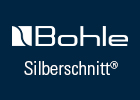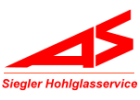Glaston’s Board of Directors has approved a revised strategy with key objectives for 2021–2025.
The key objectives are clearly improved organic growth and profitability, based on Glaston’s own strategic initiatives and the expected market growth.
Glaston’s addressable glass processing equipment market is expected to grow by more than 5% annually, on average, during the strategy period, and Glaston’s ambition is to clearly exceed this market growth. Strategic must-win development initiatives securing net sales growth and improved profitability have been identified in all Glaston’s business areas and the services business. These initiatives are supported by Group-wide cornerstone initiatives that target improved commercial and operational excellence.
Glaston’s core technologies and lifecycle solutions continue to be at the center of its strategy and Glaston aims to take market share in all its business areas. As the frontrunner in its industry, Glaston plans to increase its investments in innovation and development. Glaston is also continuing its commitment to leading the industry’s digital transformation. Profitability improvement is supported by net sales growth, an optimal product offering, as well as productivity improvements.
Along with its strategy, Glaston has set a new vision, which is to ‘lead the global glass processing industry forward with innovative technologies and lifecycle solutions’. The company’s purpose continues to be ‘build a better tomorrow through safer, smarter and more energy-efficient glass solutions’.
“This strategy builds on our strengths, which are derived from the combination of Bystronic glass and Glaston. We are focusing on fully utilizing the unique opportunity to leverage our wide range of core glass processing technologies, good customer relationships, experienced people with vast know-how, industry-leading services and a large installed base. Strong global megatrends and clearly growing markets, as well as our business area specific and company-wide initiatives, are driving the growth and give us the confidence to set ambitious financial targets”, says Anders Dahlblom, President and CEO of Glaston Corporation.
“Glaston is aiming to take its sustainability ambition to the next level by adding new non-financial targets. These highlight the sustainable nature of our business and the strategic importance of our ESG commitment. I look forward to embarking on this strategic journey together with a fully committed Glaston team”, Dahlblom continues.
Financial targets
Glaston’s new financial targets for the strategy period 2021–2025 are:
- Annual average net sales growth (CAGR) clearly exceeding the addressable equipment market growth of more than 5% (1
- Comparable operating margin (EBITA) of 10% at the end of the strategy period (2
- Comparable return on capital employed (ROCE) of 16% at the end of the strategy period (3
As glass processing technologies continue to be a fragmented industry, Glaston is maintaining an interest in participating in industry consolidation.
SUSTAINABILITY AS A STRATEGIC FOCUS AREA
As the innovative frontrunner in its industry, Glaston’s ambition is to continue being the leader in developing the industry towards a more sustainable future. The majority of Glaston’s business is targeted at the architectural customer segment in which the company’s products provide key technologies for improving energy efficiency and the safety of buildings.
In its own operations, Glaston is committed to providing a safe and good workplace for its employees, being a responsible partner to its customers, utilizing resources efficiently, and reducing the environmental impact of its production processes. Also, as the demand for more energy-efficient and environmentally sustainable glass solutions is growing strongly, Glaston is continuing to develop its product portfolio to meet this demand.
New non-financial targets
Addressing the company’s focus on sustainability, in addition to its financial targets, Glaston has set new non-financial strategic targets:
- Customer satisfaction score (Net Promoter Score, NPS) above 40
- Group-wide safety target measured as zero lost time accidents (LTA)
- Employee Engagement target above 75 (out of 100)
- Glaston’s CO2 emissions (Scope 1 + 2)(4 in relation to net sales down by 50% from the 2020 level. In 2020, greenhouse gas emissions were 2,777 tons of CO2 with net sales of EUR 170.1 million.
BUSINESS AREA FOCUS ON GROWTH
Glaston will capture growth through its core technologies and lifecycle solutions from the following customer segments: architecture, automotive, display and solar, as well as three regions: the Americas, APAC and EMEA. China is a common focus area throughout Glaston, as it holds the single largest growth potential for all customer segments and Glaston’s business areas.
The following strategic must-win initiatives have been identified:


























